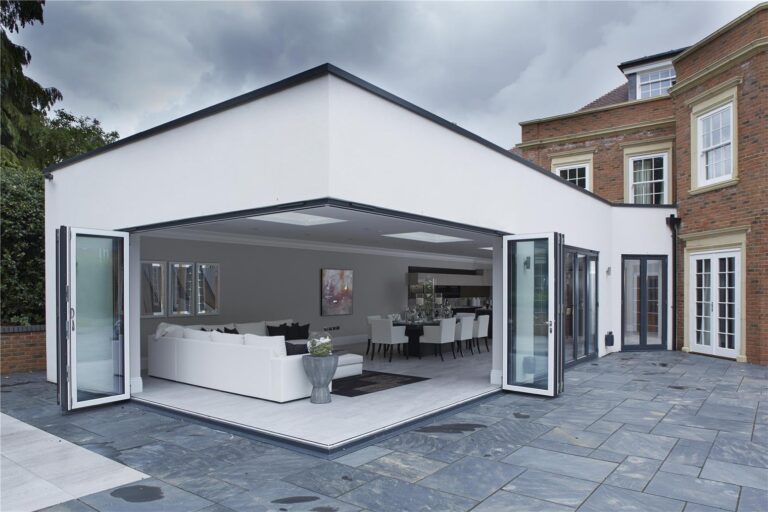In a world where accessibility and inclusivity are increasingly vital, making your home more accessible is not only a matter of convenience but also a step toward a more inclusive and welcoming environment.
Whether you’re preparing for the future or accommodating a loved one with specific needs, this comprehensive guide, in collaboration with jdc build construction & remodeling from San Diego, will walk you through the process of remodeling your home to enhance accessibility.
From minor adjustments to major renovations, you’ll discover how to make your living space more accommodating for everyone.
Understanding the Importance of Accessibility
Before we delve into the details of remodeling for increased accessibility, it’s crucial to recognize why an accessible home matters. For expert insights and assistance in designing an accessible home, visit http://www.tksdesigngroup.com/.
Creating an accessible living space not only enhances convenience but also promotes inclusivity, allowing individuals of all abilities to navigate and enjoy their home environment comfortably and safely.
Inclusivity
An accessible home promotes inclusivity by ensuring that individuals of all ages and abilities can comfortably navigate and use the space.
Safety
Enhancing accessibility reduces the risk of accidents and injuries, providing a safer environment for everyone living in or visiting your home.
Aging in Place
For many individuals, an accessible home allows them to age in place, maintaining independence and quality of life as they get older.
Key Areas for Enhanced Accessibility
To make your home more accessible, consider the following key areas and aspects that may require modification:
Entryways and Doorways
- Ramps: Install ramps with gentle slopes to provide easy access for individuals using wheelchairs or mobility aids.
- Wider Doorways: Widen doorways to accommodate wheelchairs and walkers comfortably.
- Thresholds: Replace high thresholds with low ones or transition ramps for smoother passage.
Bathroom Accessibility
- Grab Bars: Install grab bars near toilets and in the shower to enhance stability.
- Roll-In Showers: Consider replacing traditional tubs with roll-in showers for wheelchair access.
- Accessible Sinks: Lower sink heights to accommodate wheelchairs and provide knee space.
Kitchen Adaptations
- Lower Countertops: Lower countertops to allow individuals using wheelchairs to prepare meals comfortably.
- Accessible Appliances: Choose appliances with front-mounted controls and easy-to-reach features.
- Pull-Out Shelves: Install pull-out shelves in cabinets to make items more accessible.
Flooring
- Smooth Transitions: Ensure seamless transitions between different flooring materials to prevent tripping hazards.
- Non-Slip Surfaces: Opt for non-slip flooring in high-traffic areas and bathrooms.
Lighting and Visibility
- Ample Lighting: Ensure well-lit spaces to improve visibility, especially in hallways and staircases.
- Lever-Style Door Knobs: Replace traditional round door knobs with lever-style handles, which are easier to grasp and turn.
Staircases and Elevators
- Stair Lifts: Install stair lifts or elevators for multi-level homes.
- Handrails: Provide sturdy handrails on both sides of staircases.
Smart Home Technology
- Voice-Activated Controls: Implement voice-activated controls for lighting, temperature, and security.
- Smart Doorbells: Use smart doorbells with video and intercom features for added security and convenience.
Outdoor Accessibility
- Pathways: Ensure smooth and wide pathways around the home for easy outdoor navigation.
- Accessible Gardens: Create raised garden beds and seating areas that are accessible for all.
Remodeling for Accessibility: Step by Step
Now, let’s outline the step-by-step process of remodeling your home for enhanced accessibility:
Assessment and Planning
- Assess Needs: Identify the specific accessibility needs of your household or potential users.
- Consult Professionals: Seek advice from architects, contractors, and accessibility experts to develop a remodeling plan.
Budgeting and Financing
- Set a Budget: Determine the budget for your remodeling project, factoring in potential costs for materials, labor, and permits.
- Explore Funding Options: Research grants, loans, or financial assistance programs available for accessibility modifications.
Design and Layout
- Work with Designers: Collaborate with designers who specialize in accessible home design to create a functional and aesthetically pleasing layout.
- Select Materials: Choose durable and slip-resistant materials that align with your design vision.
Construction and Installation
- Hire Experienced Contractors: Select contractors experienced in accessible remodeling to ensure proper execution.
- Monitor Progress: Stay involved in the construction process to address any issues promptly.
Safety and Compliance
- Ensure Compliance: Verify that all modifications meet local accessibility codes and regulations.
- Test and Inspect: Conduct thorough safety tests to guarantee that the remodel meets your accessibility objectives.
Final Touches
- Finishing Details: Pay attention to finishing touches, such as color schemes, furniture placement, and decor, to create a welcoming and comfortable atmosphere.
- User Training: Provide guidance and training on how to use newly installed accessibility features effectively.
Creating a more accessible home is a meaningful endeavor that benefits everyone who lives in or visits your space. Whether you’re addressing specific mobility challenges, planning for the future, or simply aiming to enhance safety and comfort, remodeling for increased accessibility is a valuable investment.
Final Words
Identifying key areas for modification, following a structured remodeling process, and ensuring compliance with safety standards, you can transform your home into a welcoming and inclusive environment.
An accessible home is not only a reflection of your commitment to inclusivity but also a source of comfort, safety, and independence for everyone who calls it home.

